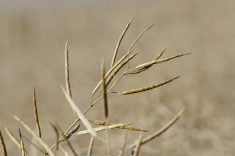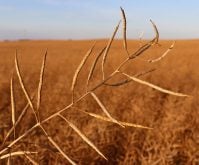The most serious drought in decades in China’s southern provinces of Yunnan and Guizhou is expected to cut their rapeseed output by 500,000 tonnes, or about half of last year’s total output, an official think-tank reported on March 23.
In 2009, the two areas produced one million tonnes of the oilseed, used to produce edible oil and feed ingredients, accounting for 7.3 per cent of China’s total output, said the China National Grain and Oils Information Centre (CNGOIC).
The centre did not give an estimate for the country’s total output for this year. Any significant reduction in the oilseed could drive up demand for soybeans. China is already the largest importer of soybeans.
Read Also

Boosting productivity could mean historic farm revenues
FCC report finds increasing productivity in the Canadian agriculture sector could mean $30 billion in farm revenue in the next decade
The forecast reduction was unlikely to spur domestic prices of rapeseed oil because the government still holds a large amount of reserves and the country’s major growing areas – Hubei and Sichuan – are expecting a bumper harvest.
“Weather in Hubei and Sichuan is good, where output will surely increase this year. The government is also expected to release its reserves. Supply of rapeseed oil will not be tight,” said one trader with a rapeseed crusher in Hubei.
China has restricted imports of Canadian canola, which is similar to rapeseed, over concerns about disease, but rapeseed oil can still be exported to China, the trader said.
The government holds more than 1.4 million tonnes of rapeseed oil in reserves.














